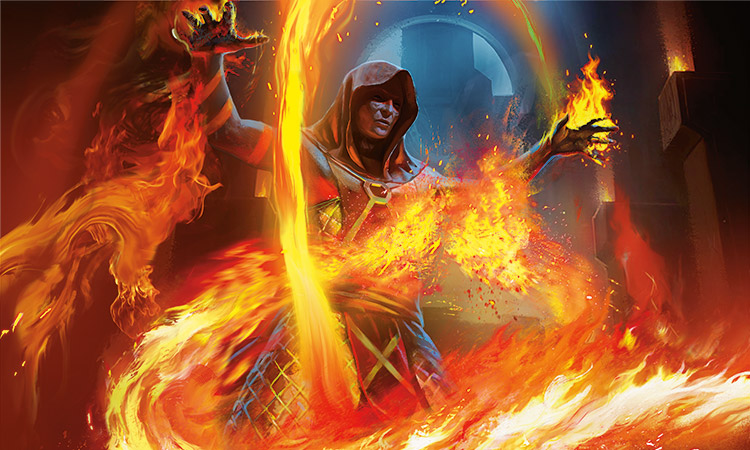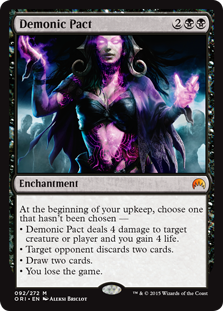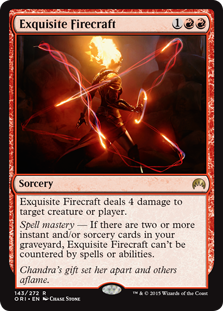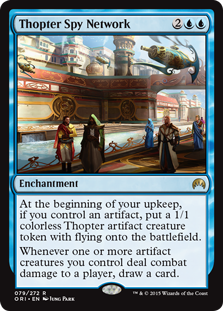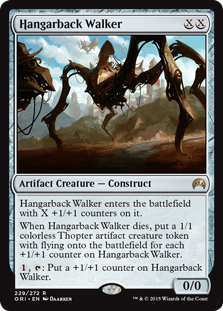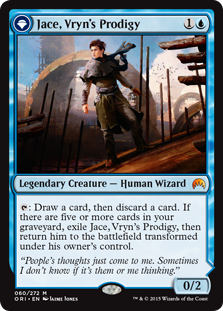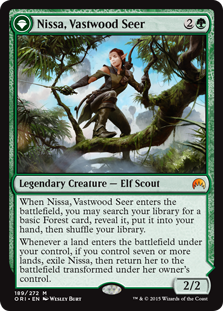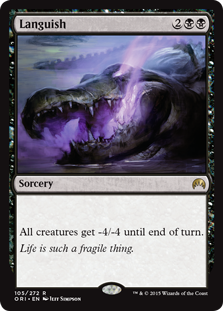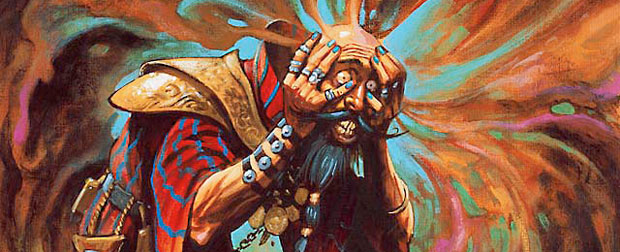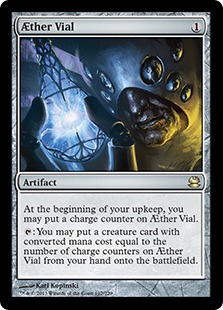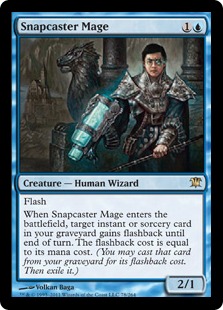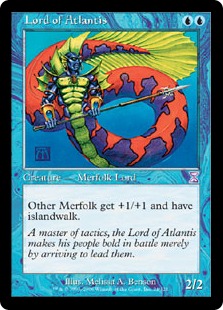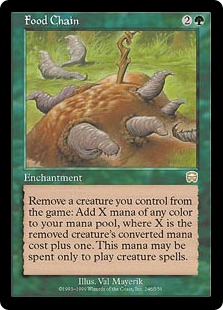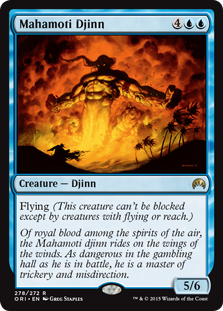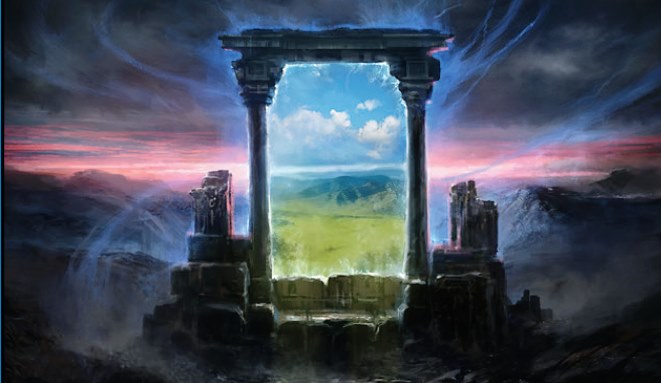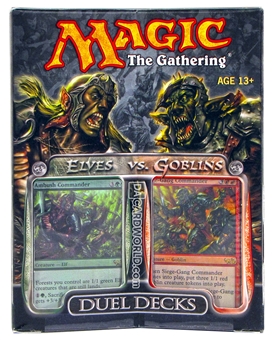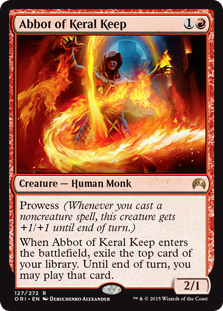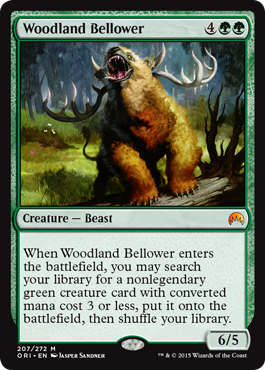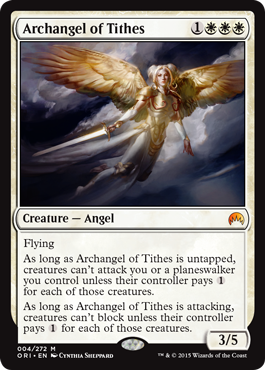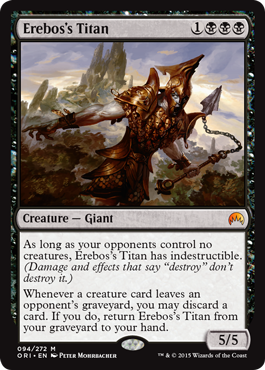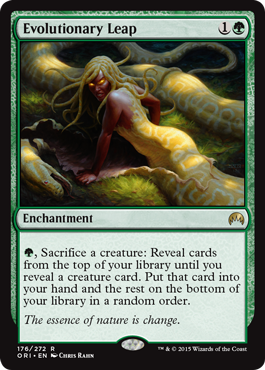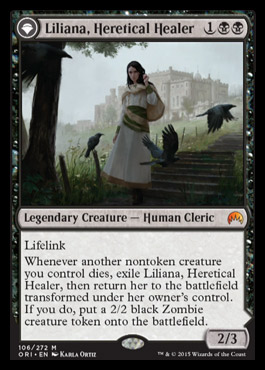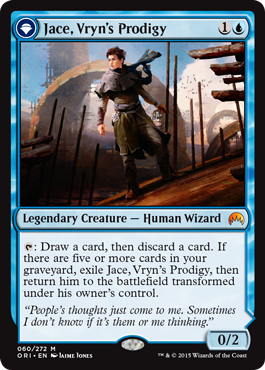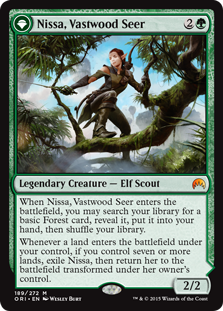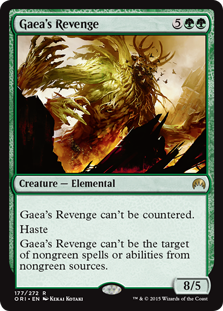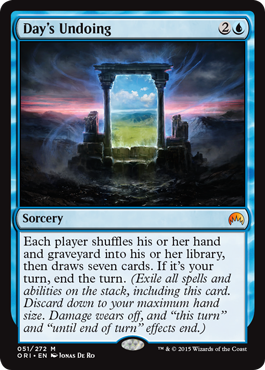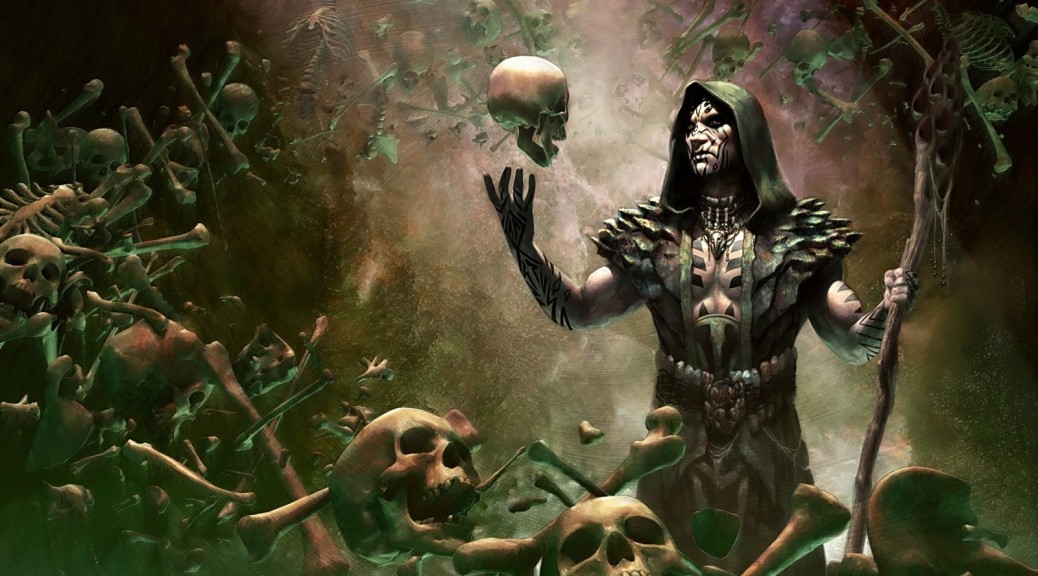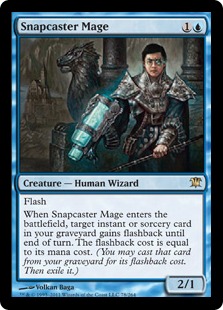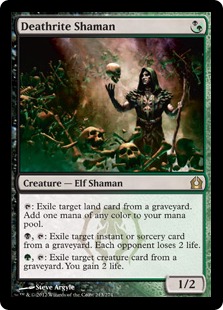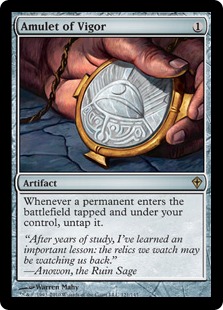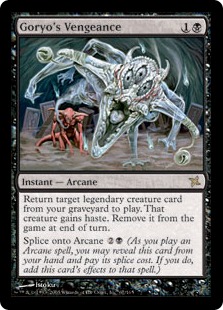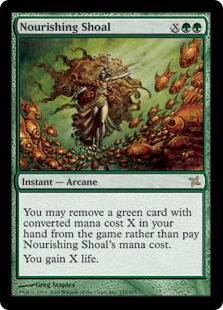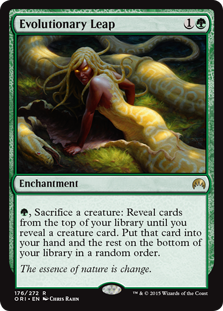By: Derek Madlem
So we had a Pro Tour this last weekend and we’re all wondering which cards were amazing and how much money we’re going to make off of them.
Our first instinct is to look at the top 8 decklists and place all of our bets there… but that might not be the best method here because of the Pro Tour’s tournament structure. The Pro Tour’s split format results in a number of scenarios where a slightly above average constructed deck makes the top 8 based on a player’s strong draft record or situations where decks that are extremely successful in constructed don’t make the top 8 because their pilot was terrible at drafting. Luckily for us, Wizards provides us with a list of all decks that finished with 8 wins or better.
The Winners
For this article we’re just going to focus on the Magic Origins cards because their prices are still in a state of flux
9-1
Red Green Devotion – 0 cards
Mono Red – 4x Abbot of Keral Keep, 4x Exquisite Firecraft, 2x Scab-Clan Berserker
Green White – 4x Hangarback Walker, 2x Evolutionary Leap, 2 Tragic Arrogance, 3x Nissa, Vastwood Seer
Mono Red – 4x Abbot of Keral Keep, 4x Exquisite Firecraft
8-1-1
Blue Black Dragon Control – 2x Languish, 3x Jace, Vryn’s Prodigy
Red Blue Ensoul Artifact – 4x Hangarback Walker, 4x Chief of the Foundry, 4x Whirler Rogue, 4x Thopter Spy Network
Red Blue Ensoul Artifact – 4x Hangarback Walker, 4x Chief of the Foundry, 4x Whirler Rogue, 3x Thopter Spy Network
Abzan Control – 2x Languish, 3x Nissa, Vastwood Seer
Abzan Control – 3x Languish
Jeskai Aggro – 4x Jace, Vryn’s Prodigy, 2x Clash of Wills
Abzan Control – 2x Languish
8-2
Red Blue Ensoul Artifact – 4x Hangarback Walker, 4x Chief of the Foundry, 4x Thopter Engineer, 2x Pia and Kiran Nalaar, 1x Whirler Rogue, 3x Thopter Spy Network
Red Blue Ensoul Artifact – 4x Hangarback Walker, 4 Chief of the Foundry, 4x Whirler Rogue, 4x Thopter Spy Network
Mono Red – 4x Abbot of Keral Keep, 4x Exquisite Firecraft
Red Blue Ensoul Artifact – 4x Hangarback Walker, 4x Thopter Engineer, 3x Chief of the Foundry, 3x Thopter Spy Network, 2x Ghirapur Aether Grid, 1x Whirler Rogue
Mono Red Goblins – 4x Goblin Piledriver, 4x Subterranean Scout, 4x Goblin Glory Chaser
Mono Red – 4x Abbot of Keral Keep, 4x Exquisite Firecraft, 1x Fiery Impulse
Red Blue Ensoul Artifact – 4x Hangarback Walker, 4x Chief of the Foundry, 4x Thopter Engineer, 4x Whirler Rogue, 3x Thopter Spy Network, 1x Foundry of the Consuls
Jeskai Heroic – 0 cards
Red Blue Ensoul Artifact – 4x Hangarback Walker, 3x Chief of the Foundry, 4x Thopter Engineer, 1x Whirler Rogue, 3x Thopter Spy Network, 2x Ghirapur Aether Grid
Go ahead and take a moment to digest that list, notice anything missing? I’ll give you a hint:
There was a lot of hype about Demonic Pact this weekend, the price went as high as $15 Sunday night (and has since come crashing back down hard and fast). The problem with investing in Demonic Pact was that it looked neat on camera and deck techs but didn’t necessarily put up a strong performance in the event. While we don’t have access to the 7-3 and worse decklists to see where the best Demonic Pact deck finished, we can see it didn’t crack the top twenty decks.
The problem with Demonic Pact (and cards like it) is that it almost always requires you to have something else to go with it. We had similar issues with Abyssal Persecutor during it’s time in Standard… you had to kill your opponent AND kill your Persecutor to win. The chief difference here is that when you can’t get rid of Pact, you actively lose rather than just not winning. While Demonic Pact is clearly a powerful card, there will also be some percentage of games where you lose the game because of it.
Let’s say that you only lose to Demonic Pact 1 in 10 times you play it. That’s still a 10% swing on your results, which is often the difference between a winning record and a losing record. When you spread that out over the course of a long tournament, like a Grand Prix or SCG Open it’s going to likely cost you at least one round over the course of the weekend, and likely more. How many tournaments would you sign up for knowing that you HAD to start 0-1, because that’s essentially what you’re doing playing cards like Demonic Pact.
Demonic Pact is a card that can comfortably and reasonably hold around $5, but anything higher than that is probably not a realistic number long term. The only situation where this changes is if we see a widespread mechanic that involves sacrificing your own permanents to fuel more powerful spells, something that is unlikely within the current state of design.
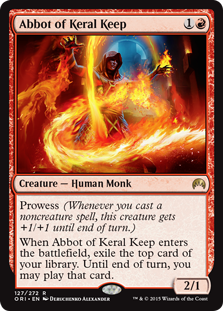 Abbot of Keral Keep showed up in numbers across a number of mono red decks, including all three that eventually made the Top Eight. I’ll take a moment here to thank all of you that told me this card was garbage over and over again, that only makes calling this card a winner that much sweeter.
Abbot of Keral Keep showed up in numbers across a number of mono red decks, including all three that eventually made the Top Eight. I’ll take a moment here to thank all of you that told me this card was garbage over and over again, that only makes calling this card a winner that much sweeter.
But realistically, any conversation that includes Abbot also has to include Exquisite Firecraft. Both of these cards showed up in the same numbers in the same decks. I’m still not wild about Exquisite Firecraft as a long term hold as it does almost nothing outside of Standard but the pair of these cards are both hovering in the $9 range today and I’m fine with advising to sell either.
While I still believe that Abbot of Keral Keep has great potential in Modern, I’m also fine with taking the gains now as this card is likely to plateau for a while until we see further innovation outside of just mono red decks.
Thopter Spy Network feels like a “win more” card, but it’s likely going to be the crux of the mirror match between these Red Blue thopter decks going forward. It’s only a matter of time before green or white are slotted in for enchantment removal to combat opposing Ensoul Artifacts, Spy Networks, and to a lesser extent Ghirpur Aether Grids, especially considering we already have the land base in place to accommodate Jeskai and Temur builds of this archetype.
Spy Network seems like the less exciting of the two marquee rares in this deck as it’s relegated heavily to the sideboard and Hangarback Walker can slot into any color deck easily as a colorless creature. If you’re going to play this card – hold onto it, if you’re not looking to play Thopters for the next couple months, then now is probably the time to cash out as only so many rares can hold the value of a set.
When I look at this card, I’m filled with disappointment in myself for missing it initially and then denying it’s quality when Jeff Hoogland put up solid results with it at the first SCG Open. Hangarback Walker is pure card advantage, it’s almost always going to take at least two cards to rid the world of this creature and it has the bonus of being colorless so it can slot into any colors.
Hangarback is already closing in on the $20 mark, which should pretty much be the ceiling on this card for it’s time in Standard as it’s hard for rares these days to pass that mark. Since the inception of Mythic rares, the only rare that I remember passing $20 is Snapcaster Mage, and this is no Snapcaster Mage. If you bought a big pile of these to cash in on, this is your time. If you’re looking for a Standard archetype to carry you through the next year+ I might look elsewhere as this deck is losing a lot in Ensoul Artifact, Shrapnel Blast, and Darksteel Citadel this October.
I’m still in shock at the success of any of these flip-walkers and if I had to place my bets, I would not have placed them on Jace. Hovering around $30, Jace’s price is probably a little over-hyped at the moment partly because he’s a fan favorite character and partly because of we saw some pretty high prices on the hot lists two weekends ago at GP Dallas. I don’t really think this price is real or sustainable, but I said the same thing at $20. Realistically there’s going to a slow unwinding on this price of this card as many vendors had to pay so high just to get these in stock the last couple weeks and they’re unlikely to be anxious to lose money on those cards, expect buylists to creep down as Jace only appeared in two out of the top twenty decks.
Nissa appeared in the same number of decks as Jace, but with one less copy total. Nissa did not show up in any of the Green Red devotion decks but did make an appearance in Sperling’s Abzan Control deck and in Kibler’s Green/White deck. Nissa was another card that came out of the gate strong and went on a bit of a run but has since cooled. Sitting at $26, we’re already North of any kind of price this card can maintain. We’ll see how the format settles out over the next few weeks but I’m doubtful that Borderland Ranger is where we’re going to want to be in what appears to be a very aggressive format.
Traditional Control decks did not fare well at the PT this weekend. Languish showed up across a handful of decks that included Abzan and Dragon control decks. Languish showed up as a 4-of in zero of these decks with each of the decks running 2 or 3 split between the main deck and sideboard. These are not the numbers that create a $10 board wipe card. Take a look at any board wipe from the last seven or eight years and you’ll see the same thing, a peak at $7+ while supplies were low and then a significant decrease in price from there. I think the price of Languish is going to…well, languish. Ship these now if you’re not playing them, there isn’t any real upside from here.
Flash in the Pan
My overall suggestion for any Magic Origins cards that saw action this weekend is to get rid of them. The price on all of these cards is at or near enough to their peak that there’s just not much room to make money on these cards, but plenty of room to lose.
